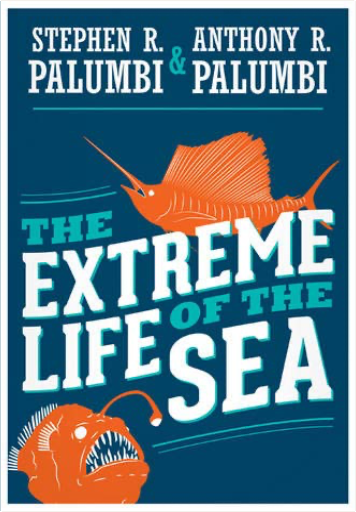 The Extreme Life of the SeaStephen R. Palumbi, Anthony R. Palumbi The Extreme Life of the SeaStephen R. Palumbi, Anthony R. Palumbi A thrilling tour of the sea's most extreme species, written by one of the world's leading marine scientists
The ocean teems with life that thrives under difficult situations in unusual environments. The Extreme Life of the Sea takes readers to the absolute limits of the ocean world―the fastest and deepest, the hottest and oldest creatures of the oceans. It dives into the icy Arctic and boiling hydrothermal vents―and exposes the eternal darkness of the deepest undersea trenches―to show how marine life thrives against the odds. This thrilling book brings to life the sea's most extreme species, and tells their stories as characters in the drama of the oceans. Coauthored by Stephen Palumbi, one of today’s leading marine scientists, The Extreme Life of the Sea tells the unforgettable tales of some of the most marvelous life forms on Earth, and the challenges they overcome to survive. Modern science and a fluid narrative style give every reader a deep look at the lives of these species.
The Extreme Life of the Sea shows you the world’s oldest living species. It describes how flying fish strain to escape their predators, how predatory deep-sea fish use red searchlights only they can see to find and attack food, and how, at the end of her life, a mother octopus dedicates herself to raising her batch of young. This wide-ranging and highly accessible book also shows how ocean adaptations can inspire innovative commercial products―such as fan blades modeled on the flippers of humpback whales―and how future extremes created by human changes to the oceans might push some of these amazing species over the edge.  Living Architecture: How Synthetic Biology Can Remake Our Cities and Reshape Our LivesRachel Armstrong Living Architecture: How Synthetic Biology Can Remake Our Cities and Reshape Our LivesRachel Armstrong What will the city of the future look like? More like an ever-changing and vibrant garden than a static set of buildings and blocks. In 'Living Architecture,' British scientist and architect Rachel Armstrong re-imagines the world’s extensive urban areas and argues that in order to achieve sustainable development of the built environment — and help countries like Japan recover from natural disasters — we need to start thinking differently. Armstrong sets the scene for considering different ways of making structures and materials, suggesting that we can ‘grow’ more ecologically compatible buildings by using life-like technologies, such as protocells. The result is a new kind of architectural practice where cities behave more like an evolving ecosystem than lifeless machines. 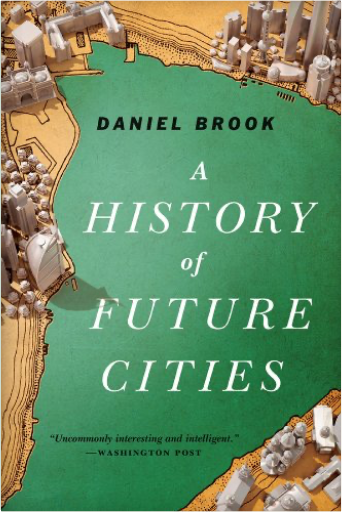 A History of Future CitiesDaniel Brook A History of Future CitiesDaniel Brook "[An] inspired tour of the post modern city…Invigorating." ―Mark Kingwell, Harper’s
Hailed as an “original and fascinating book” (Times Literary Supplement), A History of Future Cities is Daniel Brook’s captivating investigation of four “instant cities”―St. Petersburg, Shanghai, Mumbai, and Dubai―that sought to catapult themselves into the future by emulating the West. 12 illustrations; 4 maps  Aphex Twin's Selected Ambient Works, Vol. 2Marc Weidenbaum Aphex Twin's Selected Ambient Works, Vol. 2Marc Weidenbaum Extravagantly opaque, willfully vaporous ― Aphex Twin's Selected Ambient Works Volume II, released by the estimable British label Warp Records in 1994, rejuvenated ambient music for the Internet Age that was just dawning. In the United States, it was his first full length on Sire Records (home to Madonna and Depeche Mode), which helped usher in Richard D. James, for whom Aphex Twin is but one of numerous monikers, as a major force in music, electronic or otherwise.
Faithful to Brian Eno's definition of ambient music, Selected Ambient Works Volume II was intentionally functional: it furnished chill out rooms, the sanctuaries amid intense raves. Choreographers and film directors began to employ it to their own ends, and in the intervening decades this background music came to the fore, adapted by classical composers who reverse-engineer its fragile textures for performance on acoustic instruments. Simultaneously, "ambient" has moved from esoteric sound art to central tenet of online culture. This book contends that despite a reputation for being beat-less, the album exudes percussive curiosity, providing a sonic metaphor for our technologically mediated era of countless synchronized nanosecond metronomes. 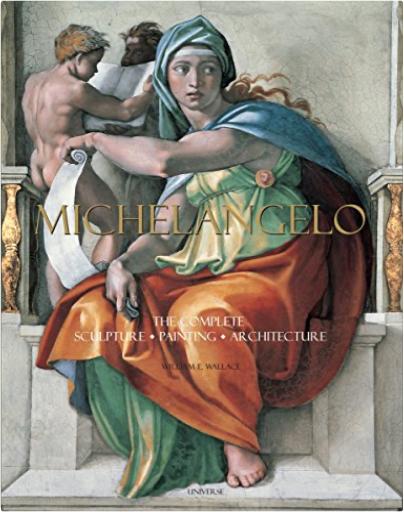 Michelangelo: The Complete Sculpture, Painting, ArchitectureWilliam E. Wallace Michelangelo: The Complete Sculpture, Painting, ArchitectureWilliam E. Wallace With an engaging text by renowned Michelangelo scholar William E. Wallace, Michelangelo: The Complete Sculpture, Painting, Architecture brings together in one exquisite volume the powerful sculptures, the awe-inspiring paintings, and the classical architectural works of one of the greatest artists of all time. Including everything from his sculptures Pietàs and David to his beautiful paintings of the Sistine Chapel and the Doni Tondo, the book provides an opportunity to view Michelangelo’s work as never before, and to more fully understand the artist who, through his work, spoke of his life and times. The frescoes are specially printed on onion skin paper to recreate the actual appearance of light reflecting off of the plaster walls. The stunning black-and-white photography of the sculptures is printed in four colors to bring out the rich details of the marble. 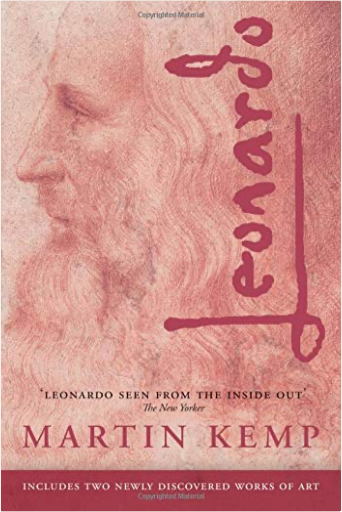 Leonardo: Revised EditionMartin Kemp Leonardo: Revised EditionMartin Kemp This fascinating exploration of Leonardo da Vinci's life and work identifies what it was that made him so unique, and explains the phenomenon of the world's most celebrated artistic genius who, 500 years on, still grips and inspires us.
Martin Kemp offers us exceptional insights into what it was that made this Renaissance man so special, and the "real" meaning behind such masterpieces as the Mona Lisa and the Last Supper. Tracing Leonardo's career in all its variety, we learn of his unfulfilled dreams, relationships with powerful patrons, and the truth about his views on God, humanity, and nature. The famous notebooks are the key to understanding the secret of Leonardo's success and genius, Kemp shows, as they clearly reveal the workings of his mind and display the truly innovative and investigative nature of his creative vision. In these notebooks, over 20,000 pages of drawings and notes detail his incredible discoveries and inventions—from the workings of the human eye to designs for flying machines and giant crossbows. Bringing the story up to the present day, Martin Kemp considers what he means to us today, investigates the "Leonardo industry," and speculates about what he would be doing if he were alive today.
This updated edition of Martin Kemp's best-seller is the first book on Leonardo to include two newly discovered works, the most important such discoveries in over a hundred years.  Brunelleschi's Dome: How a Renaissance Genius Reinvented ArchitectureRoss King Brunelleschi's Dome: How a Renaissance Genius Reinvented ArchitectureRoss King On August 19, 1418, a competition concerning Florence's magnificent new cathedral, Santa Maria del Fiore—already under construction for more than a century—was announced: "Whoever desires to make any model or design for the vaulting of the main Dome....shall do so before the end of the month of September." The proposed dome was regarded far and wide as all but impossible to build: not only would it be enormous, but its original and sacrosanct design shunned the flying buttresses that supported cathedrals all over Europe. The dome would literally need to be erected over thin air.
Of the many plans submitted, one stood out—a daring and unorthodox solution to vaulting what is still the largest dome (143 feet in diameter) in the world. It was offered not by a master mason or carpenter, but by a goldsmith and clockmaker named Filippo Brunelleschi, then forty-one, who would dedicate the next twenty-eight years to solving the puzzles of the dome's construction. In the process, he did nothing less than reinvent the field of architecture.
Brunelleschi's Dome is the story of how a Renaissance genius bent men, materials, and the very forces of nature to build an architectural wonder we continue to marvel at today. Denounced at first as a madman, Brunelleschi was celebrated at the end as a genius. He engineered the perfect placement of brick and stone, built ingenious hoists and cranes (among some of the most renowned machines of the Renaissance) to carry an estimated 70 million pounds hundreds of feet into the air, and designed the workers' platforms and routines so carefully that only one man died during the decades of construction—all the while defying those who said the dome would surely collapse and his own personal obstacles that at times threatened to overwhelm him. This drama was played out amid plagues, wars, political feuds, and the intellectual ferments of Renaissance Florence— events Ross King weaves into the story to great effect, from Brunelleschi's bitter, ongoing rivalry with the sculptor Lorenzo Ghiberti to the near catpure of Florence by the Duke of Milan. King also offers a wealth of fascinating detail that opens windows onto fifteenth-century life: the celebrated traditions of the brickmaker's art, the daily routine of the artisans laboring hundreds of feet above the ground as the dome grew ever higher, the problems of transportation, the power of the guilds.
Even today, in an age of soaring skyscrapers, the cathedral dome of Santa Maria del Fiore retains a rare power to astonish. Ross King brings its creation to life in a fifteenth-century chronicle with twenty-first-century resonance.  Techno Rebels: The Renegades of Electronic FunkDan Sicko Techno Rebels: The Renegades of Electronic FunkDan Sicko When it was originally published in 1999, Techno Rebels became the definitive text on a hard-to-define but vital genre of music. Author Dan Sicko demystified techno's characteristics, influences, and origins and argued that although techno enjoyed its most widespread popularity in Europe, its birthplace and most important incubator was Detroit. In this revised and updated edition, Sicko expands on Detroit's role in the birth of techno and takes readers on an insider's tour of techno's past, present, and future in an enjoyable account filled with firsthand anecdotes, interviews, and artist profiles.
Techno Rebels begins by examining the underground 1980s party scene in Detroit, where DJs and producers like the Electrifying Mojo, Ken Collier, The Wizard, and Richard Davis were experimenting with music that was a world apart from anything happening in New York or Los Angeles. He details the early days of the "Belleville Three"-Juan Atkins, Derrick May, and Kevin Saunderson-who created the Detroit techno sound and became famous abroad as the sound spread to the UK and Europe. In this revised edition, Sicko delves deeper into the Detroit story, detailing the evolution of the artists and scene into the mid-1990s, and looks to nearby Ann Arbor to consider topics like the Electrifying Mojo's beginnings, the role of radio station WCBN, and the emergence of record label Ghostly International. Sicko concludes by investigating how Detroit techno functions today after the contrived electronica boom of the late 1990s, through the original artists, new sounds, and Detroit's annual electronic music festival.
Ultimately, Sicko argues that techno is rooted in the "collective dreaming" of the city of Detroit-as if its originators wanted to preserve what was great about the city-its machines and its deep soul roots. Techno Rebels gives a thorough picture of the music itself and the trailblazing musicians behind it and is a must-read for all fans of techno, popular music, and contemporary culture.  An Astronaut's Guide to Life on Earth: What Going to Space Taught Me About Ingenuity, Determination, and Being Prepared for AnythingChris Hadfield An Astronaut's Guide to Life on Earth: What Going to Space Taught Me About Ingenuity, Determination, and Being Prepared for AnythingChris Hadfield "Hadfield is a genius, a man of science and technology and no first-timer to the universe."-New York Post
Chris Hadfield has spent decades training as an astronaut and has logged nearly 4000 hours in space. During this time he has broken into a Space Station with a Swiss army knife, disposed of a live snake while piloting a plane, and been temporarily blinded while clinging to the exterior of an orbiting spacecraft.
In his bestselling An Astronaut's Guide to Life on Earth, Hadfield takes readers deep into his years of training and space exploration to show how to make the impossible possible. Through eye-opening, entertaining stories, his vivid and refreshing insights will teach you how to think like an astronaut, and will change, completely, the way you view life on Earth-especially your own.  The ShiningStephen King The ShiningStephen King Before Doctor Sleep, there was The Shining, a classic of modern American horror from the undisputed master, Stephen King.
Jack Torrance’s new job at the Overlook Hotel is the perfect chance for a fresh start. As the off-season caretaker at the atmospheric old hotel, he’ll have plenty of time to spend reconnecting with his family and working on his writing. But as the harsh winter weather sets in, the idyllic location feels ever more remote . . . and more sinister. And the only one to notice the strange and terrible forces gathering around the Overlook is Danny Torrance, a uniquely gifted five-year-old. 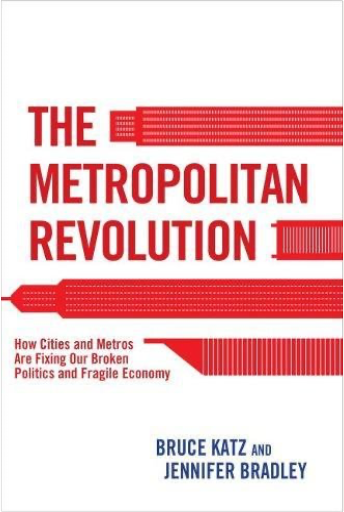 The Metropolitan Revolution: How Cities and Metros Are Fixing Our Broken Politics and Fragile EconomyBruce Katz, Jennifer Bradley The Metropolitan Revolution: How Cities and Metros Are Fixing Our Broken Politics and Fragile EconomyBruce Katz, Jennifer Bradley Across the US, cities and metropolitan areas are facing huge economic and competitive challenges that Washington won't, or can't, solve. The good news is that networks of metropolitan leaders – mayors, business and labor leaders, educators, and philanthropists – are stepping up and powering the nation forward. These state and local leaders are doing the hard work to grow more jobs and make their communities more prosperous, and they're investing in infrastructure, making manufacturing a priority, and equipping workers with the skills they need.
In The Metropolitan Revolution, Bruce Katz and Jennifer Bradley highlight success stories and the people behind them.
· New York City: Efforts are under way to diversify the city's vast economy
· Portland: Is selling the "sustainability" solutions it has perfected to other cities around the world
· Northeast Ohio: Groups are using industrial-age skills to invent new twenty-first-century materials, tools, and processes
· Houston: Modern settlement house helps immigrants climb the employment ladder
· Miami: Innovators are forging strong ties with Brazil and other nations
· Denver and Los Angeles: Leaders are breaking political barriers and building world-class metropolises
· Boston and Detroit: Innovation districts are hatching ideas to power these economies for the next century
The lessons in this book can help other cities meet their challenges. Change is happening, and every community in the country can benefit. Change happens where we live, and if leaders won't do it, citizens should demand it.
The Metropolitan Revolution was the 2013 Foreword Reviews Bronze winner for Political Science. 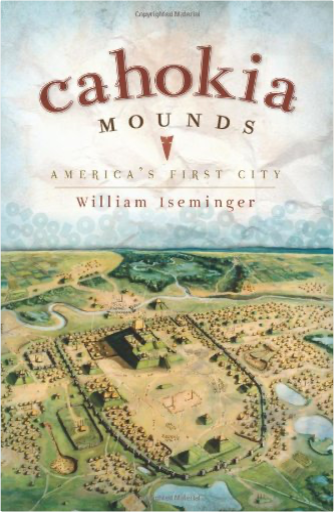 Cahokia Mounds: America's First CityWilliam Iseminger Cahokia Mounds: America's First CityWilliam Iseminger About one thousand years ago, a phenomenon occurred in a fertile tract of Mississippi River flood plain known today as the "American Bottom." This phenomenon came to be called Cahokia Mounds, America's first city. Interpreting the rich heritage of a site like Cahokia Mounds is a balancing act; the interpreter must speak as a scholar to the general public on behalf of an entirely different civilization. Since even those three groups are splintered into myriad dialects of perspective, sometimes it is hard to know what language to use. But William Iseminger's work at the site has given him nearly four decades of practice in Cahokia Conversation 101, and he tells the story of the place and its ancient culture (as well as its place in contemporary culture) with the clarity and confidence of a native speaker. |
 The Extreme Life of the SeaStephen R. Palumbi, Anthony R. Palumbi
The Extreme Life of the SeaStephen R. Palumbi, Anthony R. Palumbi  Living Architecture: How Synthetic Biology Can Remake Our Cities and Reshape Our LivesRachel Armstrong
Living Architecture: How Synthetic Biology Can Remake Our Cities and Reshape Our LivesRachel Armstrong  A History of Future CitiesDaniel Brook
A History of Future CitiesDaniel Brook  Aphex Twin's Selected Ambient Works, Vol. 2Marc Weidenbaum
Aphex Twin's Selected Ambient Works, Vol. 2Marc Weidenbaum  Michelangelo: The Complete Sculpture, Painting, ArchitectureWilliam E. Wallace
Michelangelo: The Complete Sculpture, Painting, ArchitectureWilliam E. Wallace  Leonardo: Revised EditionMartin Kemp
Leonardo: Revised EditionMartin Kemp  Brunelleschi's Dome: How a Renaissance Genius Reinvented ArchitectureRoss King
Brunelleschi's Dome: How a Renaissance Genius Reinvented ArchitectureRoss King  Techno Rebels: The Renegades of Electronic FunkDan Sicko
Techno Rebels: The Renegades of Electronic FunkDan Sicko  An Astronaut's Guide to Life on Earth: What Going to Space Taught Me About Ingenuity, Determination, and Being Prepared for AnythingChris Hadfield
An Astronaut's Guide to Life on Earth: What Going to Space Taught Me About Ingenuity, Determination, and Being Prepared for AnythingChris Hadfield  The ShiningStephen King
The ShiningStephen King  The Metropolitan Revolution: How Cities and Metros Are Fixing Our Broken Politics and Fragile EconomyBruce Katz, Jennifer Bradley
The Metropolitan Revolution: How Cities and Metros Are Fixing Our Broken Politics and Fragile EconomyBruce Katz, Jennifer Bradley  Cahokia Mounds: America's First CityWilliam Iseminger
Cahokia Mounds: America's First CityWilliam Iseminger  Made with Delicious Library
Made with Delicious Library